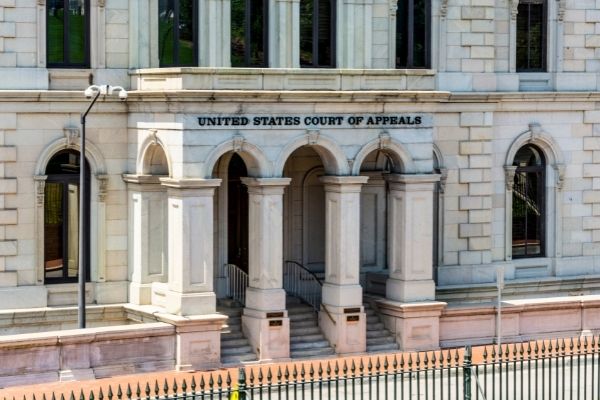Ideal Federal Appeal Lawyers: Getting Justice in Federal Appeals
Ideal Federal Appeal Lawyers: Getting Justice in Federal Appeals
Blog Article
Debunking the Process of Federal Appeals: What You Need to Know
Browsing the complex realm of government allures can often feel like passing through undiscovered waters for those strange with the procedure. Understanding the nuances of appellate court territory, the intricacies of submitting a notice of appeal, offering a compelling quick, and making a convincing oral disagreement are important elements that can dramatically affect the result of a situation. By untangling the layers of intricacy surrounding government appeals, people can gain a more clear understanding right into the mechanisms that regulate this critical point of the legal system.
Recognizing Federal Appeals Refine
Looking into the detailed world of the government charms process unveils a methodical and organized journey via the judicial system. Federal charms act as a critical device for evaluating choices made by reduced courts. Comprehending this procedure is necessary for anyone involved in legal proceedings at the federal degree.
The process typically begins with an event dissatisfied with a reduced court's judgment submitting a notice of allure. This sets off a review by a higher court, where a panel of courts assesses the legal debates offered by both events. Briefs describing the legal thinking behind each event's placement are sent, and oral debates may be heard to clear up complicated problems.
The appellate court's decision is based on a detailed exam of the lower court's procedures and the arguments presented. The judges do not focus however reconsider realities on whether legal mistakes happened that affected the reduced court's decision. When the appellate court reaches a choice, it can verify, turn around, remand, or customize the lower court's ruling, supplying clearness and finality to the lawful conflict. Understanding this process is essential for browsing the intricacies of federal charms successfully.
Appellate Court Territory Discussed
As we advance from understanding the federal appeals procedure to dissecting the details of appellate court jurisdiction, a fundamental element comes to light pertaining to the authority and limitations of these greater courts in the legal landscape. Appellate court territory describes the scope of cases that a certain appellate court has the power to examine and make a decision upon. Unlike high court that hear instances for the very first time, appellate courts are restricted to examining decisions made by reduced courts. These choices can consist of judgments from both state and government courts.
Appellate courts have jurisdiction over certain kinds of cases, normally those entailing lawful mistakes, step-by-step issues, or questions of law as opposed to valid disagreements. The jurisdiction of appellate courts is generally laid out in statutes and regulations that govern the court system. Comprehending appellate court jurisdiction is important for celebrations associated with the appeals procedure as it identifies whether a case is qualified for testimonial and the degree to which the appellate court can interfere in the lower court's decision.
Filing a Notice of Charm
The initial step in commencing the federal Home Page appeals process entails filing a Notice of Appeal with the suitable appellate court. This vital paper formally informs the court and the various other parties associated with the case that the appealing celebration intends to seek a testimonial of the reduced court's choice. Filing a Notice of Charm is a rigorous procedural need that establishes the appellate procedure moving.
When preparing the Notification of Appeal, it is necessary to make sure conformity with the certain regulations and guidelines of the relevant appellate court. federal appeal lawyers. The file has to commonly consist of details such as the situation name, the lower court's name, the date of the judgment being appealed, and a succinct statement showing the grounds for the appeal

Rundown and Dental Argument
In the appellate procedure, offering composed briefs and taking part in dental debates play pivotal functions in supporting for the appealing celebration's setting prior to the appellate court. Briefs are extensive lawful papers that outline the parties' debates, legal authorities, and analysis supporting their settings. These created entries supply the court with a thorough understanding of the facts of the case, the pertinent legislation, and why the appealing party believes the reduced court's decision ought to be overturned.
Following the entry and review of the briefs, oral disagreements offer the events a chance to more clarify their placements, attend to any kind of inquiries the appellate judges might have, and highlight bottom lines from their written briefs. Oral debates are a chance for the lawyers to convince the courts via spoken advocacy and reactions to questions from the bench.
Both the created briefs and oral debates are vital elements of the appellate procedure, permitting parties to present their situation completely and compellingly prior to the appellate court. - federal crime lawyer
Obtaining the Appellate Court Choice
The appellate court's choice is commonly supplied in a composed style and lays out the court's final thoughts on the legal issues offered, the thinking behind their decision, and the judgment provided. The time structure for receiving the appellate court's choice can vary, yet courts strive to supply prompt resolutions. Whether the appellate court verifies, reverses, or remands the lower court's decision, comprehending the effects of the ruling is crucial for all parties included in the appellate process.
Verdict
Comprehending the appellate court jurisdiction, submitting a notification of charm, preparing briefs, and presenting dental arguments are all crucial parts of this process. Inevitably, getting the appellate court decision can provide clarity and resolution to lawful disputes.
As we progress from comprehending the government allures process to exploring the ins and outs of appellate court territory, a basic facet comes to light relating to the authority and limitations of these higher courts in the lawful landscape. Appellate court jurisdiction refers to the scope of cases that a specific appellate court has the power to make a decision and examine upon. Unlike trial courts that listen to situations for the first time, appellate courts are restricted to evaluating decisions made by reduced courts. Recognizing appellate court territory is important for events involved in the appeals procedure as it identifies whether an instance is eligible for testimonial and the extent to which the appellate court can intervene in the lower court's choice.

Report this page